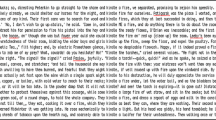Abstract
Research on metaphor as a phenomenon amenable to the techniques of computational linguistics received a substantial boost from a recent US government funding initiative (iARPA, http://www.iarpa.gov/Programs/ia/Metaphor/metaphor.html) that set up a number of teams in major universities to address the issues of metaphor detection and interpretation on a large scale in text. Part of the stated goal of the project was to detect linguistic metaphors (LMs) computationally in texts in four languages and map them all to a single set of conceptual metaphors (CMs). Much of the inspiration for this was the classic work of George Lakoff (Lakoff and Johnson 1980) which posited a set of universal metaphors in use across cultures and languages. I wish to examine the assumptions behind this goal and in particular to address the issue of how and in what representation such CMs can be expressed. I shall argue that a naïve approach to this issue is to make very much the same assumptions as the work of Schank and others in the 1970s: namely that there can be a universal language of “primitives” for the expression of meaning, which in practice always turns out to be a form of simple English. Reviving that assumption for the study of metaphor raises additional issues since, even if the senses of the terms in those CM representations could be added to the representations, metaphors often deploy new senses of words which will not be found in existing sense inventories like computational lexicons. The paper is not intended just to present a negative conclusion; I also argue that the representation of metaphors in a range of languages can be brought together within some CM scheme, but that simply reviving the English-as-interlingua assumptions of 40 years ago is not a good way to make progress in this most difficult area of meaning computation. In what follows I discuss first the representation of CMs: in what language are they stated? I argue the need for some inclusion of the representation of the senses of their constituent terms within the CM, or at least a default assumption that the major sense (with respect to some lexicon such as WordNet) is the intended one. I then consider the issue of conventional metaphor and its representation in established lexicons (again such as WordNet) and the effect that can have on detection strategies for metaphor such as selectional preference breaking. I then argue that the map** of text metaphors to CMs, as well as the empirical, rather than intuitive, construction of CM inventories require further use of preference restrictions in lexicons by means of a much-discussed process of projection or coercion. I conclude that only the use of (computable) procedures such as these for metaphor detection and map** can lead to a plausible program for the large scale analysis of metaphor in text and that Lakoff’s views on metaphor lack these empirical underpinnings.
Access this chapter
Tax calculation will be finalised at checkout
Purchases are for personal use only
Similar content being viewed by others
References
Deignan, A. (2005). Metaphor and corpus linguistics. Amsterdam: Benjamins.
Fass, D., & Wilks, Y. (1983). Preference semantics, ill-formedness and metaphor. Journal of Computational Linguistics, 9, 178–187.
Gibbs, R., Bogdonovich, J., Sykes, J., & Barr, D. (1997). Metaphor in idiom comprehension. Journal of Memory and Language, 37, 141–154.
Hanks, P. (2013). Lexical analysis: Norms and exploitations. Cambridge, MA: MIT Press.
Kovecses, Z. (2002). Metaphor: a practical introduction. Oxford: Oxford University Press.
Lakoff, G., & Johnson, M. (1980). Metaphors we live by. Chicago: University of Chicago Press.
Lewis, D. (1972). General Semantics, In: D. Davidson & G. Harman (Eds.), Semantics of natural language. Reidel: Dordrecht.
Nirenburg, S., & Raskin, V. (2004). Ontological semantics. Cambridge, MA: MIT Press.
Pulman, S. (1983). Word meaning and belief. London: Croom Helm.
Pustejovsky, J. (1995). The generative lexicon. Cambridge, MA: MIT Press.
Schank, R. (Ed.). (1975). Conceptual information processing. Amsterdam: Elsevier.
Shutova, E., Teufel, S., & Korhonen, A. (2012). Statistical metaphor processing. Computational Linguistics, 39(2)
Vossen, P. (Ed.). (1998). EuroWordNet: A multilingual database with lexical semantic networks. Amsterdam: Kluwer.
Wilks, Y. (1968/2007). Making preferences more active. In K. Ahmad, C. Brewster & M. Stevenson (Eds.), Word and Intelligence I. Berlin: Springer (Reprinted).
Wilks, Y. (1977/2007). Good and bad arguments for semantic primitives. In K. Ahmad, C. Brewster & M. Stevenson (Eds.), Word and Intelligence I. Berlin: Springer (Reprinted).
Wilks, Y., Dalton, A., Allen, J., & Galescu, L. (2013). Automatic metaphor detection using large-scale lexical resources and conventional metaphor extraction. Proceedings 1st Workshop on Metaphor in NLP (Meta4NLP 2013). Atlanta, GA.
Windisch Brown, S., Dligach, D., & Palmer, M. (2011). VerbNet class assignment as a WSD task. In IWSC 2011: Proceedings of the 9th International Conference on Computational Semantics, January 12–14, 2011. Oxford, UK.
Zock, M. (2006). Needles in a haystack and how to find them? The case of lexical access. In E. Miyares Bermudez & L. Ruiz Miyares (Eds.), Linguistics in the twenty first century. Cambridge: Cambridge Scholars Press.
Acknowledgements
The paper is indebted to comments from Patrick Hanks, Robert Hoffman and Sergei Nirenburg, though the errors are all mine as always.
Author information
Authors and Affiliations
Corresponding author
Editor information
Editors and Affiliations
Rights and permissions
Copyright information
© 2015 Springer International Publishing Switzerland
About this chapter
Cite this chapter
Wilks, Y. (2015). How Can Metaphors Be Interpreted Cross-Linguistically?. In: Gala, N., Rapp, R., Bel-Enguix, G. (eds) Language Production, Cognition, and the Lexicon. Text, Speech and Language Technology, vol 48. Springer, Cham. https://doi.org/10.1007/978-3-319-08043-7_14
Download citation
DOI: https://doi.org/10.1007/978-3-319-08043-7_14
Published:
Publisher Name: Springer, Cham
Print ISBN: 978-3-319-08042-0
Online ISBN: 978-3-319-08043-7
eBook Packages: Computer ScienceComputer Science (R0)




